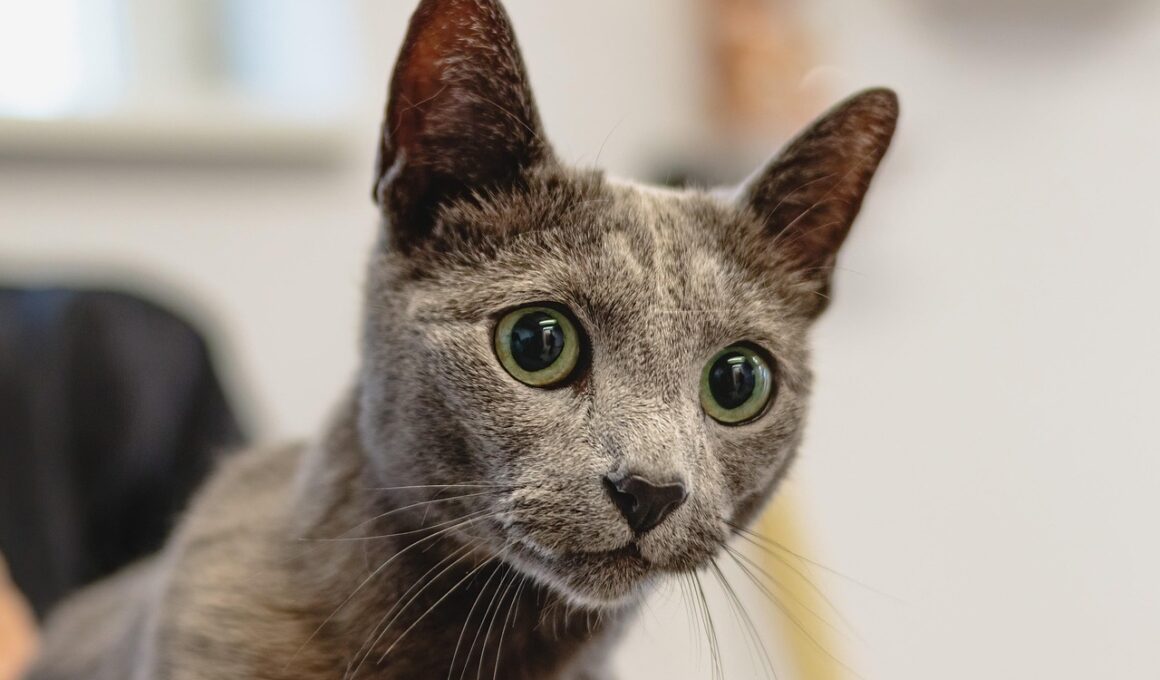Training Your Cat to Stay Calm on the Grooming Table
Grooming your cat is an important aspect of pet care. However, many cats find the grooming process stressful and overwhelming. This guide aims to assist you in training your feline friend to accept grooming without anxiety. To begin, create a positive association with the grooming table. Allow your cat to explore the table at their leisure without any restraint. Offer treats and gentle pets during this time. This helps them view the grooming area as a safe space. Gradually introduce grooming tools by placing them near the table. Showcase the tools without using them at first, allowing your cat to become familiar with their presence. Reward your cat for their calm demeanor around these items. Once your cat seems comfortable, start with short, gentle grooming sessions. Focus on areas where cats enjoy being touched, such as behind the ears. Keep your voice calm and reassuring throughout the process. Remember to monitor your cat’s body language for signs of stress. By proceeding slowly and gradually, you will build their confidence and help them learn to accept grooming as part of their routine.
It is essential to understand your cat’s temperament and tendencies when training them for grooming. Certain breeds are naturally more tolerant of grooming than others. Observe your cat’s reactions; some may enjoy being brushed, while others might find it uncomfortable. Start with very brief grooming sessions and gradually increase the duration as your cat becomes accustomed to the process. A soothing environment can also make a significant difference. Play soft music, keep the room quiet, and eliminate distractions. Preparation is key as well; ensure you have everything ready before you begin. This includes brushes, combs, and any necessary grooming tools. Additionally, consider grooming your cat when they are most relaxed. For many cats, this is after a meal or playtime. Consistency is crucial in creating a grooming routine your cat can rely on. For lasting success, engage in grooming daily. Make sure to reward them after each session with their favorite treats or extra affection. Establishing this routine will further reinforce positive associations with grooming. Eventually, your cat will learn to stay calm on the grooming table, making the process smoother for both of you.
Understanding Stress Indicators
Recognizing signs of stress in your cat during grooming sessions is vital for their emotional well-being. Cats exhibit various behaviors that indicate discomfort or anxiety. Watch for changes in body posture; tense muscles, flattened ears, and a twitching tail signal distress. Additionally, vocalizations such as hissing, growling, or meowing can indicate that your cat is unhappy. If your cat tries to escape and jumps off the table, it reflects their reluctance to continue. Understanding these signs allows you to adapt your approach accordingly. If you notice your cat showing signs of anxiety, it is important to pause the grooming session. Give them some time to calm down before attempting again. Break down the grooming process into smaller, manageable steps to decrease overall stress. Start grooming for just a few minutes and gradually work up to longer sessions. Engage in plenty of praise and give treats during less stressful moments to maintain a positive atmosphere. This helps your cat learn that grooming can be a comfortable and even enjoyable experience over time. Patience and vigilance will help create a bond of trust between you and your cat during grooming.
The choice of grooming tools also impacts the grooming experience for your cat. Select high-quality brushes and materials that are designed for the specific coat type of your cat. Cats with long fur may require a different type of brush than those with short hair. Explore various options such as slicker brushes, wide-toothed combs, or rubber grooming mitts. Each tool serves a unique purpose in maintaining not only your cat’s appearance but also their skin health. Consider introducing these tools one at a time to avoid overwhelming your feline. Allow your cat to sniff and explore each tool before usage, making your approach feel non-threatening. In addition, employing the right technique can minimize discomfort. Always brush in the direction of hair growth to prevent tugging at their skin. Use gentle strokes and avoid aggressive pulling. Regularly inspect for mats or tangles, particularly in areas that are difficult for your cat to groom themselves. If you encounter a stubborn mat, don’t yank; it’s better to cut it with safety scissors. By employing the right tools with patience, you can help your cat comfortably adjust to regular grooming.
Creating Positive Associations
Creating positive experiences around grooming is essential for your cat’s training. In addition to offering treats and praise, it can be beneficial to incorporate playtime into grooming sessions. Before beginning to groom, engage your cat in their favorite game with toys or laser pointers to create excitement. This strategy helps your cat associate happy moments with being on the grooming table. After a successful grooming session, ensure to reward your cat with treats or affection. This practice reinforces the idea that grooming leads to positive outcomes. Additionally, consider using calming aids if your cat remains particularly skittish. Natural calming sprays or pheromone diffusers can create a calming atmosphere for your cat. Diminishing anxiety enables a smoother grooming session and paves the way for longer grooming time in the future. Be mindful of the time of day; find moments when your cat is quieter or more relaxed for grooming. Also, keep grooming sessions brief at first and gradually increase duration. By making these sessions a positive ritual, your cat will learn to embrace grooming as an integral part of their routine.
Socialization plays a critical role in training your cat to accept grooming. Kittens who experience gentle handling from a young age are often more tolerant of grooming practices later in life. Expose your kitten to different environments, sounds, and even brief brushings at a young age. Positive reinforcement during this early period can help create a well-adjusted adult cat. If you adopt an older cat, the process may take longer, requiring more patience. Engage other family members in the grooming routine, allowing your cat to interact with various caregivers. This builds trust and helps your cat become accustomed to being handled by different people. Using multiple grooming aids, such as varied brushes, can also help. This reduces the likelihood of your cat becoming fixated on a single brush and becoming anxious. Regularly handle your cat in a relaxed manner throughout the day, which fosters a comfortable atmosphere. By promoting varied interactions, your cat will gradually adapt to normal grooming with less stress. Ultimately, persistent support during their grooming journey will enhance the bond between you and your beloved feline.
Patience and Persistence in Training
Patience is the cornerstone of successfully training your cat to remain calm during grooming. Never rush through the training process, as each cat is unique, requiring different amounts of time to adapt. The journey is a gradual one and involves consistent engagement and positive reinforcement. It’s crucial not to force your cat onto the grooming table if they display reluctance or strong resistance. Instead, allow them to approach the area at their own pace. If your cat seems anxious, take a break and try again later. Revisit previous successful sessions to highlight that grooming is a positive experience. Adapt your training according to their comfort level, celebrating small victories along the way. Create a calming routine before grooming, perhaps with regular petting or soft words, to put your cat at ease. Review progress over time and adjust your approach if needed. Persistence in training pays off as your cat starts feeling more comfortable. Celebrate milestones, and soon, you’ll develop a trusted rapport that transforms grooming into a bonding experience. Committing to this process cultivates a loving and trusting relationship with your beloved pet.
In conclusion, training your cat to accept grooming is a rewarding effort that enhances your pet’s well-being. The journey demands time, understanding, and an adjustment to your cat’s unique personality. Each positive experience your cat has while being groomed strengthens trust and confidence. A well-groomed cat is not only happier but also healthier. The ongoing relationship between you and your cat will flourish as they become accustomed to grooming as part of their routine. Additionally, creating a calming and positive atmosphere around grooming will benefit both of you. Remember, training is not a one-time event but a continuous process that evolves with your cat. Building upon positive associations will help create long-lasting habits. Through gentle persistence, your cat will learn to stay calm on the grooming table. Ultimately, grooming sessions become a cherished time of connection and bonding. Enjoy these moments with your feline companion, as they will provide comfort, satisfaction, and a strengthened connection between you. A little patience, love, and consistency will lead you both to a successful grooming experience. Cherish and celebrate the journey of training your cat to accept grooming with joy and enthusiasm!


